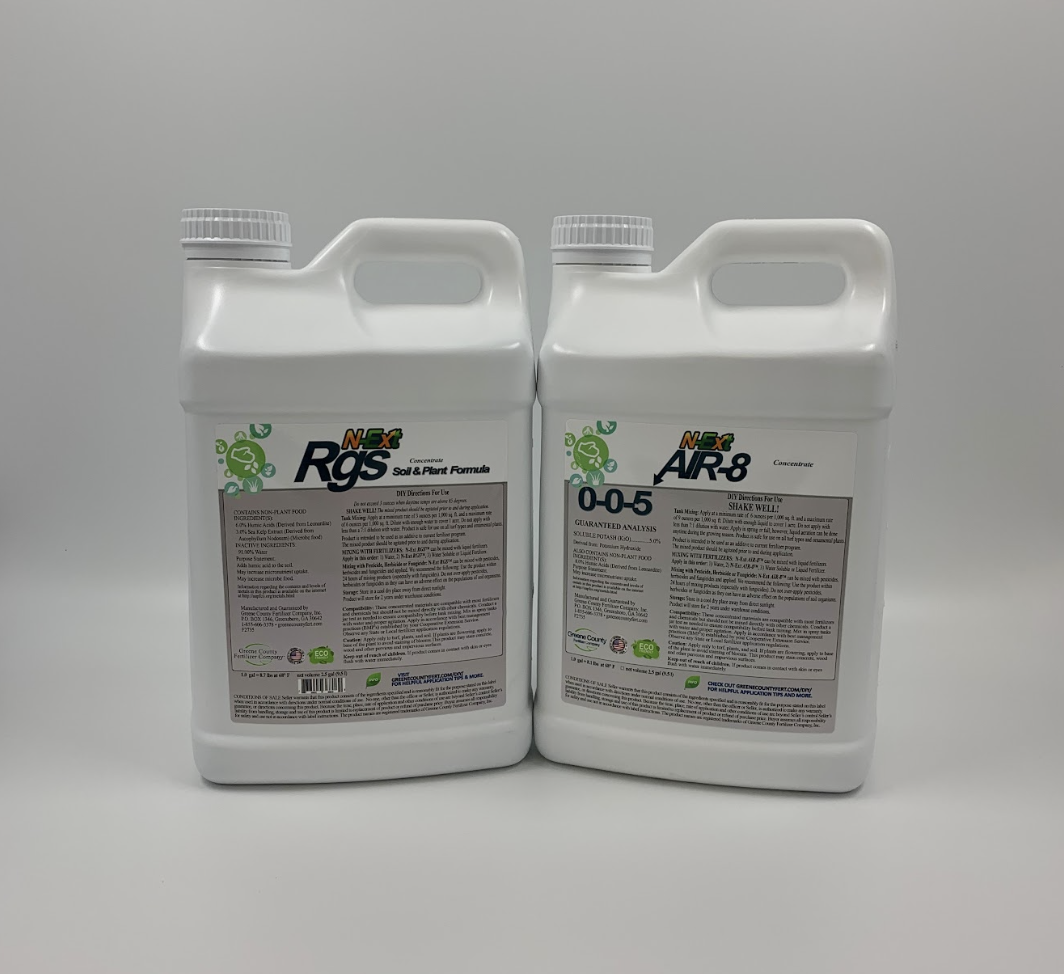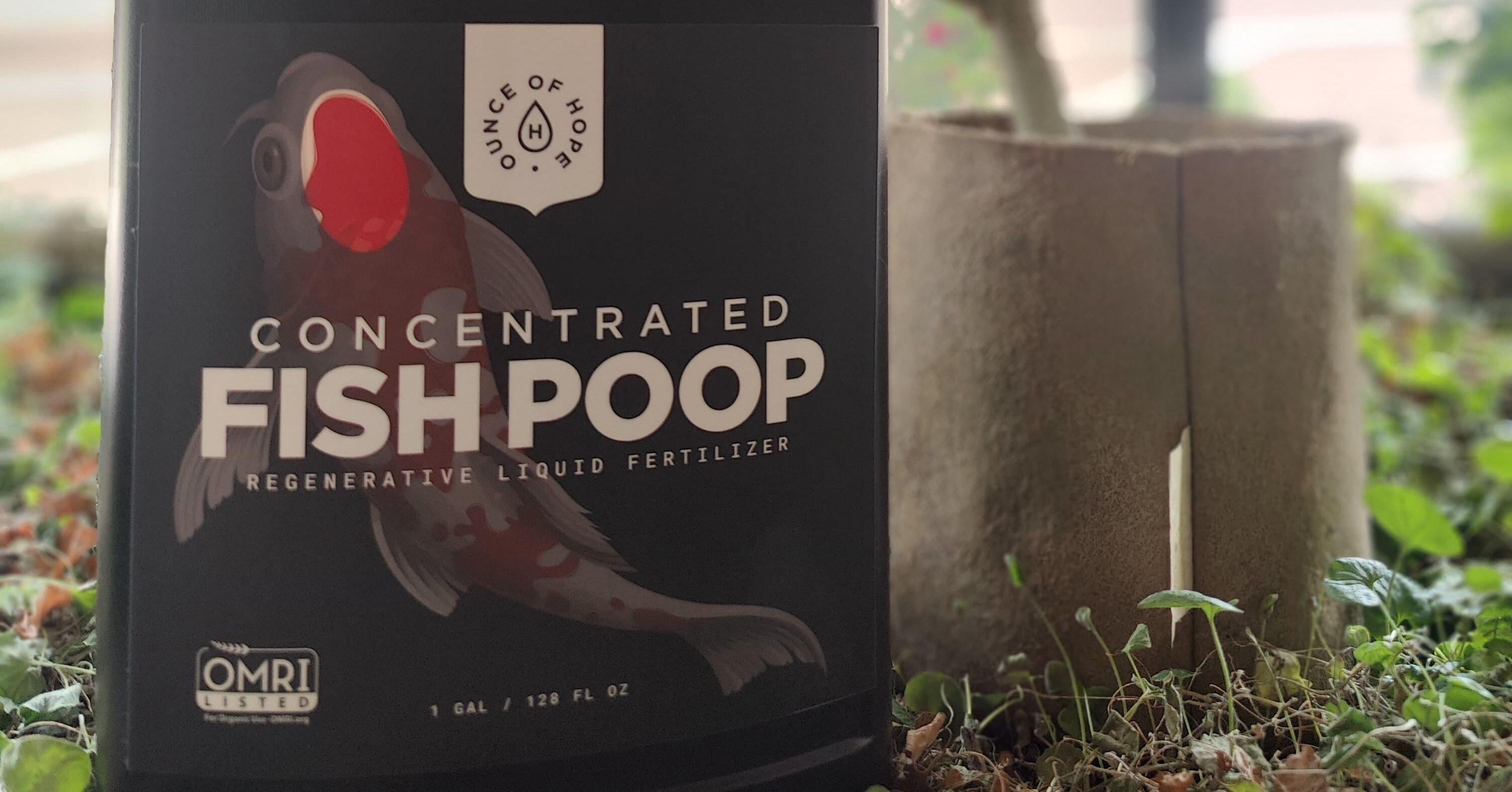Latest Products: Fertilizers
Get Healthier, Stronger Lawns With These Four Effective Fertilizers
Finding the Right Formula for Your Needs
By John Perry, Owner of Greene County Fertilizer
In landscaping, fertilizer or fertilization can sometimes seem like a daunting task. How do you know what to apply? What fertilizer will give the plants the best benefit? How often should you apply? Does a label have to specifically name the tree shrub or flower you’re applying to? With these questions in mind, it’s important to start with the basics and then make choices based on your business, your landscape and your individual needs. Let’s jump in and cover the nutrients first.
 For the most part, we will be using a fertilizer with a balanced blend of nitrogen, phosphorus and potassium, and these are represented as the three numbers on the front of the bag or bottle. You may see this with different percentages, however, for this article we will focus on the simplest, balanced blend, a 10–10–10. Quite simply, this means that there is 10 percent nitrogen, 10 percent phosphorus and 10 percent potassium inside the bag. This is going to be your standard balanced fertilizer blend that you will see used the most often with annuals, perennials, trees and shrubs. Each of these nutrients are going to be found in the least supply or, in other words, are going to be the most utilized by a plant or tree to get the most growth and vigor. Generally speaking, fertilizing two times per year on trees or flowerbeds is enough to give a good, healthy boost to those landscaped areas, but getting on a program of every six to eight weeks will create the optimum result.
For the most part, we will be using a fertilizer with a balanced blend of nitrogen, phosphorus and potassium, and these are represented as the three numbers on the front of the bag or bottle. You may see this with different percentages, however, for this article we will focus on the simplest, balanced blend, a 10–10–10. Quite simply, this means that there is 10 percent nitrogen, 10 percent phosphorus and 10 percent potassium inside the bag. This is going to be your standard balanced fertilizer blend that you will see used the most often with annuals, perennials, trees and shrubs. Each of these nutrients are going to be found in the least supply or, in other words, are going to be the most utilized by a plant or tree to get the most growth and vigor. Generally speaking, fertilizing two times per year on trees or flowerbeds is enough to give a good, healthy boost to those landscaped areas, but getting on a program of every six to eight weeks will create the optimum result.
How much fertilizer do you need to apply?
As a general rule of thumb, it’s good to apply about one pound of each nutrient per thousand square feet of surface area in the course of a growing season. Now, there are special circumstances where some plants or soils may require more or less of one particular nutrient. This would be one of those instances where soil testing would come in handy. Oftentimes, following a general application guideline with a balanced fertilizer will give your plants and trees a well-deserved boost in growth and vigor. There is some very simple math when using something like a balanced 10–10–10 fertilizer. In a 50-pound bag of fertilizer, there would be five pounds of each nutrient available. The math on that is quite simple: 10 percent of 50 equals five pounds. On a single application, this bag would cover 10,000 square feet at half a pound of each nutrient per thousand square feet. This is about the maximum I would recommend on any single feeding. You will get the most benefit to your plant by doing this one time in the spring and one time in the fall.
Is there a difference between using granular or liquid fertilizer?
The nutrients in a liquid fertilizer are the same as in a granular fertilizer. There is the potential for different uptake via the foliage, but the same general rules will apply. Oftentimes, the choice between liquid or granular only comes down to the equipment that is on hand and the ease of application for the applicator.
How would we apply fertilizer to a flowerbed?
Here's where a little bit of math comes in handy, and if you are running a program where you are servicing customers on a regular basis, it would be good to have this information on file in whatever customer software program you have. Measure the length and width of a flowerbed and multiply them to get the square footage. This is all you need to calculate how many pounds of material will need to be applied to cover the entire area. If you have a flowerbed that is 20 feet wide by five feet deep, you will have 100 feet of area in which to apply fertilizer. Almost every bag of fertilizer will have a chart or a guide on the bag that will tell you spreader settings to give you a certain amount of material per thousand square feet. Most of the hard work is done for you. I would recommend using a belly spreader for doing flowerbed applications, as it will get your technician or applicator above the plants and allow better visibility of where the material is going.
.png?width=2120&height=1412&name=Greene%20County%20Fertilizer%20(1).png)
When fertilizing trees, follow the same application rate if you are doing a topical feeding. It is often recommended to use deep root or tree stakes for tree fertilizing, but doing a surface application will benefit the tree as well. Calculate the square footage by measuring one end of the canopy to the other and multiply by 3.14. Or, set your spreader to the 1/2-pound per thousand application rate and apply under the canopy.
Do my plants need to be listed on the fertilizer label?
If the fertilizer being applied does not contain any chemicals, such as weed controls, insecticides or any other control product, the fertilizer will be safe to apply to all plants or trees. Fertilizer is fertilizer and as long as you are meeting the nutritional needs of the plant, you will have great success.
Be sure to read the labels and apply materials using the best management practices of your state. Be sure to follow the licensing laws and, above all, DO NOT OVERAPPLY! Take your time and you will see the results of your hard work.
 ABOUT
ABOUTJohn Perry is the owner and founder of Greene County Fertilizer Co. in Greensboro, Georgia. Greene Greene County manufactures liquid nutritional products for soil amending, liquid fertilizers for lawns, trees and plants and provides a variety of chemical solutions for any-sized business.

Get Healthier, Stronger Lawns With These Four Effective Fertilizers

MEMPHIS, Tenn., Oct. 01, 2024 (GLOBE NEWSWIRE) -- Ounce of Hope, AKA Ounce of Hope Farms, LLC andFishpoop.com, was OMRI-certified in June 2024. The...